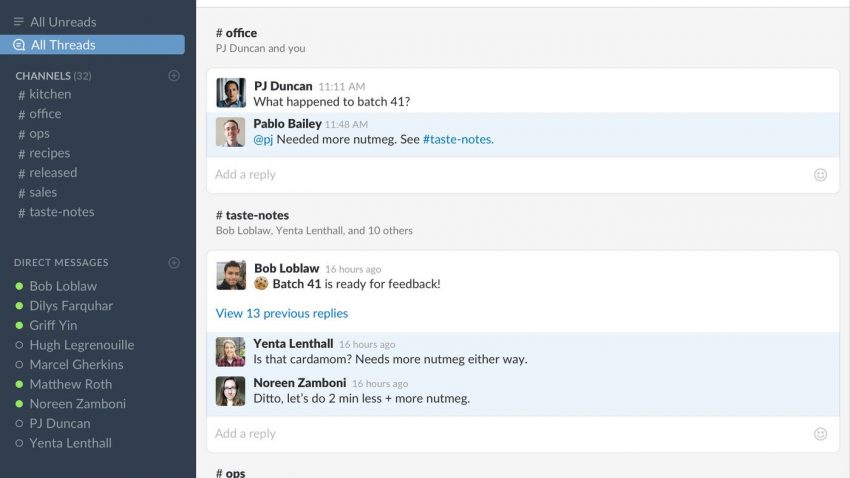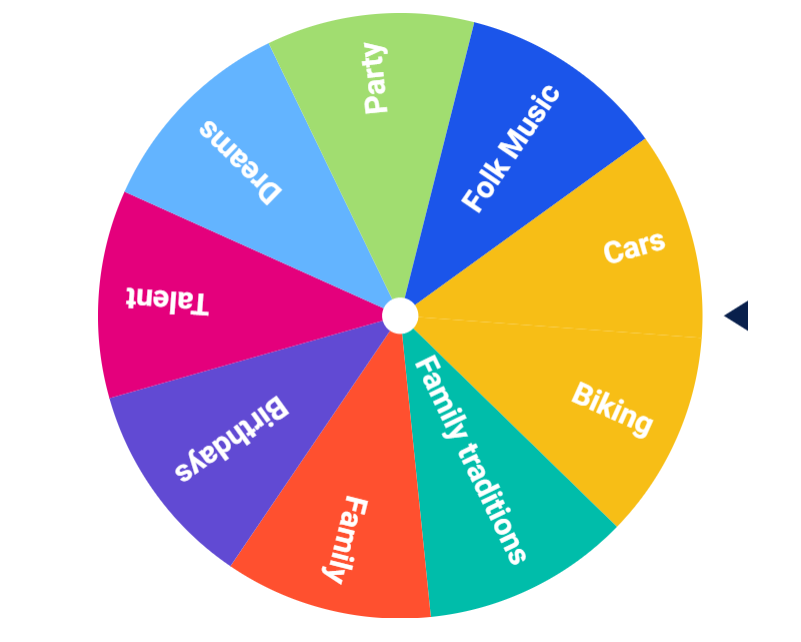Although the localization team at Blueprint is no stranger to working from home, the transition to full-time remote work presented some challenges.
In the first week of March, before the official stay-at-home order was issued in Washington state, the localization team at Blueprint already had a contingency of remote team members working from home across the country. Additionally, during the past two snowmageddons in the Pacific Northwest, a sizeable number of team members did not come into the office for days, and yet business carried on as usual without interruption.
Although the localization team is no stranger to working from home, the transition to full-time remote work still presented some challenges. For example, we lost access to non-verbal and non-textual forms of communication and connection. In the pre-pandemic workplace, we would have impromptu conversations in the breakroom that inspire solutions to problems or fascinating writing projects. We could just walk the length of the floor to discuss potential adjustments to visual design with the production artists or to seek input from another language team on transcreation. Full-time WFH means all communication has to be deliberate and conducted by typing or through prearranged calls. This is certainly an adjustment for everybody, not to mention the lack of cordial interactions among and emotional support from friendly coworkers.
On the social front, our monthly international potluck is postponed for the foreseeable future. Those who typically come into the office no longer enjoy a short group walk around the block on a sunny afternoon, engage in discussions about one cultural-specific practice or another around the coffee machine or trade silly stories and bad jokes at the lunch table. All of these losses add to the repercussions of isolation and diminished human contact.
Blueprint Technologies is in the business of helping companies build a modern workplace and enable their workforces to remote work smartly. One of Blueprint’s learnings from this work is that teams and organizations often do not anticipate certain challenges until they transition to a remote workforce and working remotely full time. These challenges are by no means roadblocks but rather speed bumps that can be overcome together with the right tools.
With the dedicated support of Blueprint’s IT and HR teams, the localization team was able to transition to fully remote smoothly and quickly, establishing best practices and standardizing processes that have maintained our productivity and quality. More importantly, these practices shine a spotlight on the key factors that hold a team together as it continues to grow.
Here are the five strategies the localization team came up with to overcome WFH challenges:
#1
Optimize messaging and chat practices for communication and collaboration

At the start of the transition, the localization team was already well acquainted with our internal communication software, utilizing it for chats, daily stand-ups with remote colleagues and meetings small and large. This made transitioning the entire team to WFH a smooth and refreshingly pain-free undertaking. Right from the start, we identified ways to further leverage the tool’s collaboration and communication features, especially when responding to textual communication. The new reality of full-time remote work motivated the team’s communication group to quickly develop comprehensive communication best practices.
- Reorganize “channels” to prioritize their use over “chats” for team-wide communication.
- Customize notifications in the desktop app settings for each channel to ensure each team member receive notifications when they, or a relevant user, are mentioned.
- Tag the channel and use a subject heading when starting a thread in order to push notifications to every user.
- Follow the best practice of replying in a thread to organize conversations.
FROM A MEMBER OF OUR TEAM
“2020 was a huge challenge for everyone in general and for our localization team specifically. But thinking back, one positive aspect sticks out most for me. Regardless of whether a team member was remote before the transition or not, we all grew together as one big localization family. If 2020 did anything for us, it’s an amazing amount of online communication that brought us all together as a team.”
– German translation & localization specialist
#2
Tap into the wisdom of full-time remote team members
Some team members have never worked remotely, let along working remotely full time. Carve out a space in your home to avoid distraction or physical discomfort is not easy for everyone. The team’s full-time remote members recommended some tried-and-true best practices.
- Find a dedicated space for work to minimize distraction.
- Set up as ergonomic a workspace as possible: have an external monitor, a comfortable chair and do not work from your couch or bed.
- Have fixed and regular work hours and limit interaction with family members during those hours.
- Get away from the desk and move around for 5–10 minutes every hour.
- Get dressed and dress comfortably.
- Practice self-care and seek help from professionals if necessary.
FROM A MEMBER OF OUR TEAM
“I really appreciate Blueprint and our clients giving us the opportunity to work from home during this hard year even after stay-at-home orders were loosened. Thanks to this thoughtful decision, I could safely work from home and save myself a 3-hour daily commute. This has helped me to find the time to learn new skills and grow professionally, while having great communication with teammates in online meetings.”
– Japanese translation & localization specialist
#3
Enhance existing daily standups and regular one-on-ones with the support of video
The localization team’s leadership impressed upon members the importance of leveraging every means available to ensure effective and regular communication — keyboards, phones, voice or video calls on our chat and messaging tools — within each language team and workgroup. This is not merely a means of tracking progress and ensuring productivity. At a time of physical distancing and isolation, interaction with coworkers who care about one another’s wellbeing, even if through a computer screen and oversized gaming headsets, is instrumental to the team’s mental health. Besides the daily scrum meetings and one-on-ones, teams meet regularly to check in on each other, show off small appliance purchases, chat about favorite TV shows or share recipes and online shopping recommendations. This offers much-needed emotional support during a challenging time.
FROM A MEMBER OF OUR TEAM
“This year, I truly learned the importance of breathing. A simple deep breath can bring you back to center and make you focus. It helps you tackle what is in front of you and scares away the daunting what ifs that leave you wondering.”
– Brazilian Portuguese translation & localization specialist
#4
Make team-wide social interactions virtual

The localization team’s Morale Committee introduced several social activities that team members could choose to participate in voluntarily, all virtual.
- Stretch Away: For 10 minutes every afternoon, we dial into a meeting to stretch our bodies and relax our minds at our respective desks. While these are not professional training sessions, team members with expertise and strong interest in wellness take turns hosting. Stretch Away debuted in April, shortly after the transition to WFH, and it has developed an enthusiastic following.
- Daily virtual coffee break: Taking turns, one team member a day spins a “random picker wheel” and kicks off a team-wide conversation about the randomly selected topic: music, film, food, language, cars, pets, holidays, travel, teen pics. — you name it. Debuted in April and made a fixture in our daily routine in the summer, these coffee breaks have allowed team members to share aspects about themselves that would otherwise remain unknown, especially at a time when impromptu interaction is scarce.
- 100 Happy Days: As both WFH and the stay-at-home order continued, the Morale Committee teammates launched a campaign to alleviate the effects of cabin fever. Each day during the 100-day period, any team member could post a photo, image or a screenshot with a brief description on a channel explaining why that image made them smile. As the campaign closed toward the end of the summer, we had shared hundreds of images that had made one another smile.
FROM A MEMBER OF OUR TEAM
“It is a truth universally acknowledged that all work and no play make us very dull boys and girls indeed. The Blueprint localization team has a proud tradition of making play part of the day whenever we have the chance. It was great to see that this tradition was not impacted by our transition to working remote, and it promises to carry on strong into 2021.”
– German translation & localization specialist
#5
Continue existing team-building activities

A photo shared in the Friday photo quiz. This particular photo stumped many members of the localization team. Can you guess where it was taken?
One of the localization team’s traditions has been photo quizzes on Fridays. One anonymous team member shares a photo of a place and the rest of the team has to determine whose photo it is and where it was taken. Because the places in these photos are not easily recognizable (for example, a street with cafes and colorful shops might be in Paris, without the immediately identifiable Eiffel Tower it is far more challenging) and Googling is forbidden, participants get to work their little grey brain cells in search of answers. The team members’ international backgrounds and diverse life experiences add a layer of complexity to the sleuthing. Sometimes a carefully selected photo morphs into an intense psychological game that lasts for weeks. In the past few months of working from home, the grand reveal has become one of the most anticipated moments of the week.
Looking toward 2021
These five adjustments not only helped the localization team transition to WFH successfully but also optimized our capabilities to provide high-quality service for our clients. Both personally and socially, the team has remained connected. Now that distance is the common denominator, there is no distinction between a local and a remote team member. We stretch, play games and have virtual coffee together. We offer practical as well as emotional support and celebrate birthdays and work anniversaries as a big happy work family.
While we do not yet know if and when the team will return to the office, or precisely what a post-pandemic workplace will look like, the localization team has provided high-quality services without interruption, demonstrating its adaptability to an unprecedented situation. Establishing a 100 percent virtual onboarding process swiftly while we continued to add new members to the team is no small feat. We are working even more efficiently and smartly, leveraging technology and our support for one another to enhance productivity as well as physical and mental wellbeing.
Are you looking to join a team that runs like a well-oiled machine and feels like a warm, caring family? Check out our Careers page to learn more.

